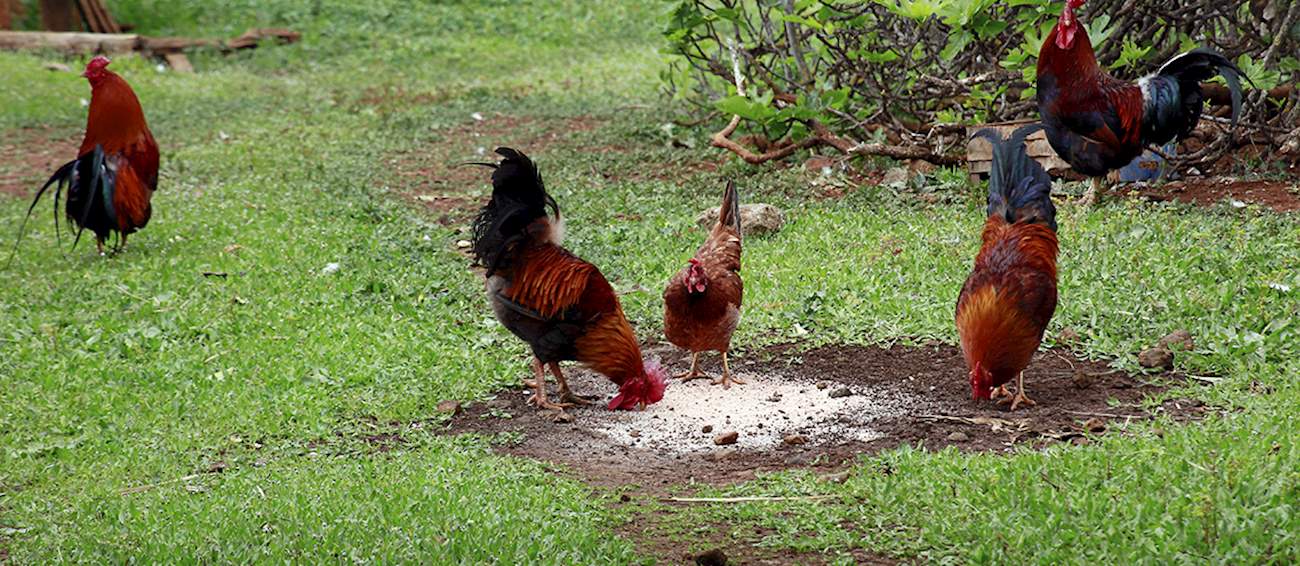TABLE OF CONTENTS
Best European Rooster Types
Gall del Penedès is the meat of roosters bred in the historical region of Penedès, in the autonomous community of Catalonia. These roosters are bred and raised in harmony with nature, fed only with green grasses and herbs, supplemented only with a little grain.
These roosters are known for their black color and large bright red crests, and this type of poultry is praised especially for the exceptional quality of its meat. Their meat is darker in color than the meat of roosters raised elsewhere. The flavor and taste of this meat is intense and very rich.
Originating from the Galician province of Lugo, Capón de Vilalba is a castrated male chicken, traditionally slaughtered and sold a week before Christmas Eve, at the annual Capón de Villalba Fair. Reared in the open and fed on a 100% natural cereal-based diet, the flavorful free-range cockerels of Vilalba have the opportunity to roam freely in search of insects and larvae, which is of great importance from a nutritional point of view and an excellent anti-stress activity.
This makes the meat of Vilalba capons more tender in texture, darker in color and particularly juicy and succulent. In Spain, roasted Capón de Vilalba makes for an essential centerpiece at every Christmas dinner but that doesn't mean it can't be enjoyed year round.
This breed of chicken is derived from the local Pedrês Portuguesa, Preta Lusitânica, and Amarela Portuguese breeds, and they are traditionally raised on small family farms in the municipality of Porto. These chickens are mostly grass-fed, and their diet is supplemented with corn exclusively during the winter.
They have a bright yellow, thin, smooth skin. Their meat is exceptionally tender, juicy, and quite flavorful despite having a relatively low fat content. The Capão de Freamunde is used in numerous traditional Christmas dishes in the region, and they are also a traditional ingredient used for meals on the Feast Day of St. Lucia.
Chapon du Périgord is a male bird belonging to a variety of slow-growing chicken from the south-west corner of France. Reared for a minimum of 150 days, chapon du Périgord is castrated before reaching sexual maturity. Its well-developed, rounded muscles are marbled with intramuscular fat, while the extremely delicate skin hides a substantial subcutaneous fat cover.
Chapon du Périgord is sold as dressed (bird plucked and gutted, with head, feet, and offal), ready to cook (bird plucked and gutted, headless, with or without tarsus), and métifait, or semi-prepared (bird plucked, gutted, with or without tarsus and with the head tucked under the wing).
TasteAtlas food rankings are based on the ratings of the TasteAtlas audience, with a series of mechanisms that recognize real users and that ignore bot, nationalist or local patriotic ratings, and give additional value to the ratings of users that the system recognizes as knowledgeable. TasteAtlas Rankings should not be seen as the final global conclusion about food. Their purpose is to promote excellent local foods, instill pride in traditional dishes, and arouse curiosity about dishes you haven’t tried.




